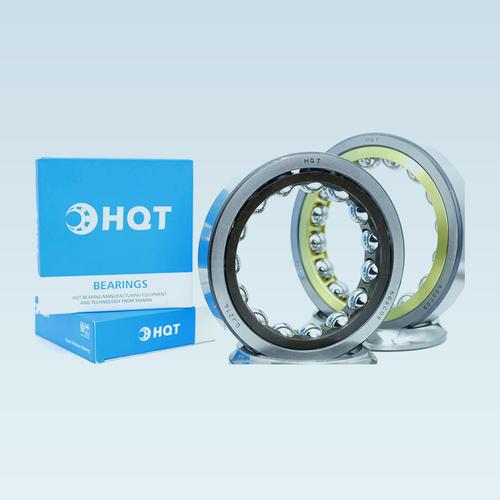Comprehensive Guide to Types of Bearings and Their Applications | Downloadable PDF Included
Bearings are critical components in machinery, reducing friction and enabling smooth rotational or linear movement. This article explores the main types of bearings, their unique features, and industrial applications. We’ll also provide a downloadable PDF resource for engineers and maintenance professionals seeking a quick reference guide.
Table of Contents
1. Ball Bearings Applications in Machinery2. Roller Bearings vs Ball Bearings Comparison
3. Industrial Bearing Selection Criteria
4. Maintenance Tips for Thrust Bearings
5. Download Bearing Types PDF Guide
1. Ball Bearings Applications in Machinery

Ball bearings are among the most common bearing types, utilizing spherical rolling elements to handle radial and axial loads. Their design features an inner and outer ring with precision-ground balls rotating between them. Common applications include electric motors, gearboxes, and automotive components like wheel hubs. The low-friction design makes them ideal for high-speed applications such as CNC spindles and turbine engines. Engineers often choose deep groove ball bearings for their versatility, while angular contact bearings excel in combined load scenarios. Recent advancements in ceramic hybrid ball bearings have expanded their use in extreme temperature environments...
2. Roller Bearings vs Ball Bearings Comparison
Roller bearings differ fundamentally from ball bearings in their use of cylindrical, tapered, or spherical rolling elements. This design allows roller bearings to support heavier radial loads compared to their ball-bearing counterparts. Cylindrical roller bearings are preferred in heavy machinery like conveyor systems, while tapered roller bearings dominate automotive wheel applications. The contact surface area – line contact in rollers versus point contact in balls – determines their load capacity and suitability. For applications requiring shock load resistance, such as mining equipment, spherical roller bearings with their self-aligning capability provide superior performance...
3. Industrial Bearing Selection Criteria
Selecting the appropriate bearing type requires analyzing multiple operational factors. Load direction (radial, axial, or combined), rotational speed, and environmental conditions dictate bearing choice. For food processing plants, stainless steel bearings with proper IP ratings prevent corrosion. In aerospace applications, hybrid ceramic bearings offer weight savings and thermal stability. Lubrication requirements vary significantly – sealed bearings work well in maintenance-free applications, while high-temperature environments might require specialty greases. Vibration analysis tools help predict bearing lifespan, enabling proactive replacement schedules...
4. Maintenance Tips for Thrust Bearings
Thrust bearings require specific maintenance practices due to their axial load specialization. Regular inspection of raceway wear patterns helps detect misalignment issues. In vertical pump applications, proper preloading of angular contact thrust bearings ensures optimal performance. Oil analysis programs can detect lubricant breakdown in high-pressure hydraulic systems. For wind turbine applications, condition monitoring systems track bearing health through vibration and acoustic emissions. Implementing proper storage procedures prevents brinelling damage in spherical roller thrust bearings before installation...
5. Download Bearing Types PDF Guide
Our comprehensive PDF guide provides technical specifications for all major bearing types, including: load capacity charts, temperature range limitations, and ISO dimension standards. The 35-page document includes cross-reference tables for bearing replacements and maintenance checklists. Industrial engineers can access material comparison charts (steel vs ceramic), lubrication interval calculators, and failure mode analysis diagrams. The guide also features CAD file download links for common bearing configurations and 3D assembly diagrams for complex bearing housings...
Understanding bearing types and applications is crucial for mechanical system optimization. From ball bearings in precision instruments to massive spherical roller bearings in wind turbines, each type serves specific engineering needs. The included PDF guide consolidates technical data for quick reference during design or maintenance processes. Whether you’re troubleshooting bearing noise in automotive applications or selecting bearings for food-grade machinery, this resource provides actionable insights for professionals across industries.
This guide has covered essential bearing knowledge – from fundamental comparisons between roller and ball bearings to advanced maintenance techniques. The downloadable PDF serves as a permanent reference for load calculations, material selections, and industry-specific applications. Implement these insights to extend equipment lifespan, reduce downtime, and optimize mechanical system performance across your operations.




 13869596835
13869596835